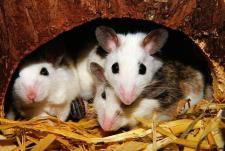Aggregated News

In a tour de force of reproductive biology, scientists in Japan have transformed mouse skin cells into eggs in a dish, and used those eggs to birth fertile pups. The report marks the first creation of eggs entirely outside a mouse. If the process could be made to work for humans, researchers could produce artificial eggs without needing to implant immature cells into ovaries to complete their development.
Katsuhiko Hayashi, a reproductive biologist at Kyushu University in Fukuoka, led the group that announced the breakthrough on 17 October in Nature. In 2012, when at the University of Kyoto, he and stem-cell biologist Mitinori Saitou reported taking skin cells down the pathway towards eggs: reprogramming them to embryonic-like stem cells and then into primordial germ cells (PGCs). These early cells emerge as an embryo develops, and later give rise to sperm or eggs. But to get the PGCs to form mature eggs, the researchers had to transfer them into the ovaries of living mice.
The next advance came in July 2016, when a team led by Yayoi Obata, at...



